Dressing the Part: The Nuances of Proper Attire
Proper attire plays a crucial role in how we are perceived and can significantly impact our interactions and success in various settings. Understanding the nuances of dressing appropriately is essential for navigating different environments with confidence and professionalism. In this article, we will explore the importance of dressing appropriately, different dress codes, and tips for dressing for professional and social settings.
The importance of dressing appropriately cannot be overstated. It communicates respect, professionalism, and a sense of belonging within a specific environment. Understanding dress codes is key to ensuring that we adhere to the expected standards. Different settings have different dress codes, such as business formal, business casual, and smart casual. Each dress code has specific guidelines that dictate appropriate attire in professional settings.

When it comes to dressing for professional settings, such as office environments, client meetings, and job interviews, it is crucial to present oneself in a manner that reflects competence and professionalism. Dressing appropriately for social events, such as weddings, parties, and networking events, is equally important as it helps create a positive impression and sets the tone for the occasion.
It is also important to consider the role of culture and context when dressing appropriately. Cultural norms influence what is considered acceptable attire in different regions and communities. Occasion-based dressing requires adapting to the specific requirements and expectations of the event or gathering.
Accessorizing and personal style can further enhance one’s overall appearance and convey individuality while still adhering to the appropriate dress code. Understanding how to accessorize and incorporate personal style appropriately can elevate any outfit.
To ensure dressing for success, it is essential to follow tips and tricks that can help navigate the nuances of proper attire effectively. From choosing the right fit and fabric to paying attention to grooming and presentation, these tips can help one present themselves in the best possible manner.
By delving into the nuances of proper attire in various settings and understanding the significance of dressing appropriately, individuals can enhance their professional image, make a positive impression, and navigate different environments with confidence and ease.
Key Takeaways:
- The importance of dressing appropriately: Dressing in the right attire is crucial for creating a positive impression and projecting professionalism.
- Understanding dress codes: Business formal, business casual, and smart casual are dress codes that vary in formality and have specific guidelines for appropriate attire.
- Dressing for professional settings: Dressing appropriately for office environments, client meetings, and job interviews enhances credibility and professionalism.
- Dressing for social events: Different social events like weddings, parties, and networking events demand different attire, and understanding the appropriate dress code is essential.
- Understanding the role of culture and context: Cultural norms and occasion-based dressing play a significant role in determining the appropriate attire for different settings.
- Accessorizing and personal style: Accessories and personal style allow individuals to showcase their unique personality while still adhering to appropriate dress codes.
- Dressing for success: Tips and tricks: Having knowledge of dos and don’ts, such as proper fit, grooming, and clothing coordination, can help individuals dress for success in various settings.
The Importance of Dressing Appropriately
Dressing appropriately is crucial in various aspects of life. It conveys professionalism, respect, and confidence. Dressing in a manner that aligns with the occasion or environment creates a positive impression and enhances credibility.
1. Professional settings: Dressing appropriately is essential in workplaces like offices or meetings. Wearing formal attire, such as suits or business attire, demonstrates professionalism and seriousness. It shows respect for the job and colleagues and can lead to better career opportunities.
2. Social events: Different events have different dress codes. Understanding and adhering to the expected attire shows that you value the occasion and the people involved. For black-tie events, men should wear tuxedos and women should wear formal gowns. Choosing the appropriate attire ensures you fit in and feel comfortable.
3. Personal presentations: First impressions are crucial, and dressing appropriately plays a significant role. It allows individuals to represent themselves effectively and can influence how they are perceived. Whether it’s a job interview or a meeting with potential clients, dressing appropriately conveys professionalism and attention to detail.
4. Cultural considerations: Dressing appropriately involves respecting cultural norms. It is important to understand the customs and traditions of the community or country you are in. Adhering to their expectations shows respect and promotes cultural understanding and acceptance.
5. Self-expression: Dressing appropriately does not mean sacrificing personal style. It is possible to find a balance between expressing individuality and adhering to dress codes. By choosing clothes that align with personal style while considering the occasion, individuals can showcase their uniqueness while still being respectful.
Understanding Dress Codes
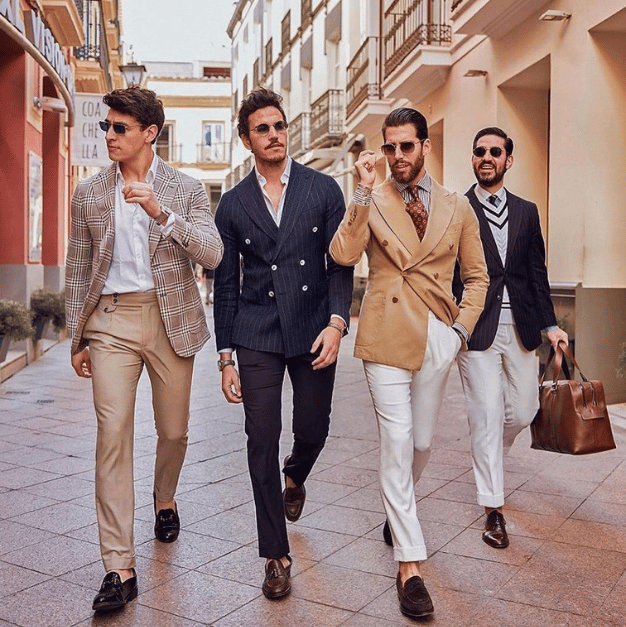
Photo Credits @mensfashions
When it comes to navigating the world of dress codes, understanding the nuances is key. In this section, we’ll dive into the different dress codes you’re likely to encounter and unravel the essence of each. From the polished rigor of business formal to the relaxed yet professional vibe of business casual, and the stylish blend of comfort and elegance in smart casual attire, we’ll explore what sets each dress code apart. So, get ready to decode the fashion matrix and dress the part with confidence!
Business Formal
Business formal attire is a requirement for professional settings like corporate offices and formal business events. Adhering to this dress code not only showcases professionalism and competence but also helps create a positive impression and instills confidence in others. In terms of dress code, men are expected to wear tailored suits in conservative colors such as navy or charcoal gray. They should pair it with a long-sleeved dress shirt, a conservative tie, and polished dress shoes. On the other hand, women are advised to opt for tailored suits or knee-length dresses in neutral colors. Closed-toe pumps and minimal accessories are preferred for them.
Maintaining a well-groomed appearance is crucial when dressing in business formal attire. Men should ensure their suits are well-fitted and without wrinkles. For women, it is important to choose clothing that fits properly and does not reveal too much. Both men and women should have neatly styled hair and try to minimize the visibility of tattoos or piercings.
In addition to projecting professionalism, adhering to the business formal dress code also showcases respect for colleagues, clients, and the work environment. It signifies a commitment to professionalism and attention to detail. It is essential to consider industry-specific requirements as some industries may have slightly more relaxed or stricter dress codes. Conducting research on the typical dress code in your industry is beneficial for making well-informed decisions.
Within the business formal dress code, there may be variations for specific occasions. For instance, black-tie events may require men to wear a tuxedo and women to wear formal evening gowns. Adapting to these variations demonstrates understanding and respect for different dress codes.
By understanding and adhering to the expectations of business formal attire, professionals can maintain a polished and professional image in the workplace. When unsure about the dress code, it is best to err on the side of being slightly more formal.
Business Casual
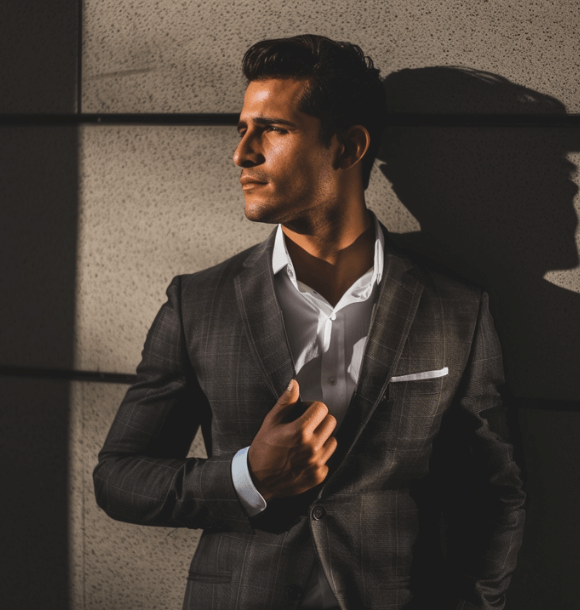
Business casual attire is a dress code that balances professionalism and comfort in many workplaces. Understanding how to dress appropriately in a business casual setting is important for maintaining a polished appearance. Here are some guidelines to consider:
– Wardrobe basics: Choose well-fitting clothing in neutral colors like black, navy, and gray. Appropriate choices include blazers, dress pants, skirts, and tailored shirts.
– Footwear: Opt for closed-toe shoes such as loafers, pumps, or dressy flats. Avoid sneakers or sandals, unless specifically allowed by your company’s business casual dress code.
– Accessories: Use minimal and tasteful accessories to enhance your outfit. Simple jewelry, belts, and scarves can add personality without being too flashy.
– Denim: Some companies allow dark-wash, well-fitting jeans as part of business casual attire. Always check your company’s business casual dress code policy before wearing jeans.
– Outerwear: Have a blazer or cardigan available to layer over your outfit if necessary. This adds a professional touch and keeps you warm in air-conditioned environments.
– Grooming: Maintain good personal hygiene and ensure clean, wrinkle-free, and well-maintained clothing. Pay attention to details like polished shoes and well-groomed hair.
Remember, each workplace may have its own interpretation of business casual. Familiarize yourself with your company’s specific guidelines to ensure appropriate dressing. Adapt your outfit choices based on company culture, the nature of your work, and any specific events or meetings you have throughout the day, while still adhering to the business casual dress code.
Smart Casual
When dressing for different occasions, it’s important to understand the concept of smart casual attire. Smart casual strikes a balance between formal and casual, allowing for a polished yet relaxed look. Here are some key points to consider when choosing smart casual attire:
– Dress pants or chinos: Opt for well-fitted dress pants or tailored chinos in neutral colors like gray, navy, or khaki.
– Collared shirts: Pair your pants with a collared shirt, such as a crisp button-down or a polo shirt, depending on the level of formality required.
– Avoid jeans and t-shirts: While smart casual allows for a more relaxed look, it’s best to avoid jeans and t-shirts as they’re too casual for this dress code.
– Blazers or sport coats: To enhance your smart casual look, consider adding a blazer or sport coat. This adds sophistication and completes the outfit.
– Footwear: Choose shoes that complement your outfit. Leather loafers or oxford shoes are popular choices for smart casual attire.
– Accessories: Enhance your ensemble with subtle accessories. A classic watch, a belt, or a pocket square can contribute to a polished appearance.
Remember, mastering smart casual attire means finding the right balance between looking put-together and feeling comfortable. Consider the occasion and dress code while selecting your outfit, and choose to be slightly more formal rather than too casual.
Dressing for Professional Settings
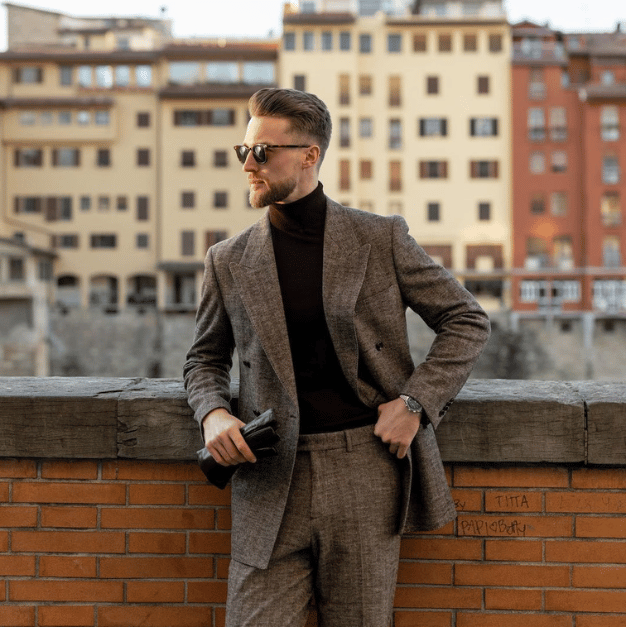
Photo Credits @benbrewster
When it comes to dressing for professional settings, there is an art to striking the right balance of style and professionalism. In this section, we’ll explore the nuances of proper attire in various work-related scenarios. From navigating office environments to making the right impression in client meetings and job interviews, each sub-section offers valuable insights to help you dress the part and make a memorable impact. So let’s dive in and uncover the secrets to mastering professional attire!
Office Environments
In office environments, it is vital to dress professionally in order to maintain a professional image. Your attire in the workplace can greatly impact how your colleagues and superiors perceive you. Here are some tips to help with dressing appropriately:
1. Dress professionally: It is important to wear well-fitted, clean, and wrinkle-free clothing that is suitable for the office environment. It is crucial to avoid wearing casual or revealing attire that may be considered inappropriate.
2. Follow dress code guidelines: It is essential to familiarize yourself with your workplace’s dress code policy and adhere to it. Different offices may have different expectations when it comes to attire.
3. Dress for the role: When selecting your attire, it is important to consider the nature of your job. For roles that involve interacting with clients, it is recommended to opt for more formal attire. In creative fields, you may have the flexibility to express your personal style while maintaining professionalism.
4. Pay attention to details: Small details matter. Make sure your clothes are well-pressed, your shoes are polished, and your accessories are appropriate for the office setting.
5. Be mindful of cultural norms: It is important to take into account any cultural norms specific to your office environment. Some workplaces may have specific expectations regarding religious attire or traditional clothing.
By dressing appropriately in the office, you can project a professional image and contribute to a positive work environment.
Client Meetings
Client Meetings are crucial for making a good impression. Consider these factors when dressing for client meetings:
1. Professional attire: Wear well-fitted suits or formal dresses in neutral colors (black, navy, or gray) to reflect professionalism and respect for the client’s business.
2. Neat and polished appearance: Ensure clean, ironed clothes without wrinkles or stains. Groom yourself with clean, well-maintained hair and trimmed beard or neatly styled makeup.
3. Conservative style: Choose conservative and modest clothing that suits a professional environment. Avoid flashy or revealing outfits that may distract or offend clients.
4. Attention to detail: Pay attention to small details like matching accessories, polished shoes, and appropriate jewelry. These details enhance your appearance and show professionalism.
5. Context sensitivity: Consider the specific context and industry when choosing attire. Different industries have different dress codes, so follow the expectations and norms of the client’s industry.
Remember, dressing appropriately shows respect and professionalism in client meetings. By following these guidelines, you can create a positive impression and build successful client relationships.
Job Interviews
When preparing for job interviews, it is important to dress appropriately to make a positive impression. Here are some key considerations:
1. Research the company: Understand the company’s dress code and culture. Some companies may have a formal dress code, while others may lean towards a business casual environment.
2. Dress professionally: It is better to be overdressed than underdressed for a job interview. Opt for a well-fitted suit or a coordinated outfit that portrays professionalism.
3. Ensure clean and wrinkle-free clothes: A polished appearance shows attention to detail and professionalism.
4. Pay attention to grooming: Tidy hair, clean nails, and avoid excessive fragrance or makeup. Personal grooming contributes to your overall presentation.
5. Choose appropriate footwear: Wear clean, closed-toe shoes. Avoid casual or flashy footwear that may detract from your professional image.
6. Keep jewelry and accessories simple and minimal.
7. Aim for a comfortable yet professional fit.
8. Consider the industry: Different industries may have different expectations for job interview attire. Creative fields may allow for more expressive styles, while corporate environments require a conservative approach.
9. Confidence is key: Choose attire that makes you feel comfortable and confident, as it positively impacts your overall demeanor.
Remember, dressing appropriately for a job interview demonstrates professionalism and respect for the opportunity. By following these guidelines, you can ensure that your attire contributes to a successful interview.
Dressing for Social Events
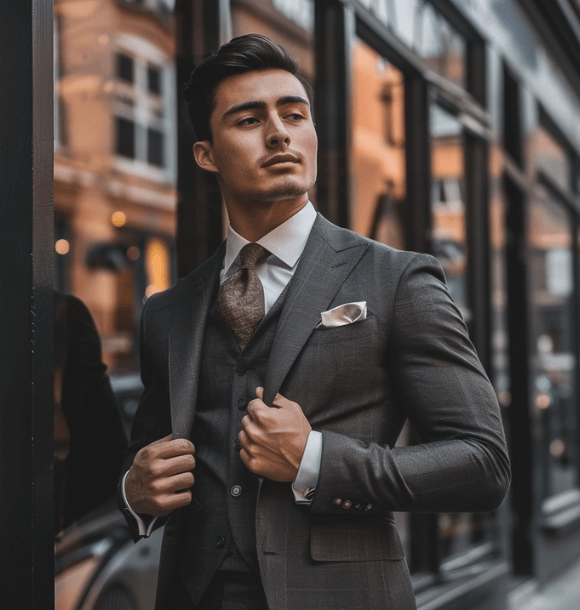
When it comes to dressing for social events, each occasion presents its own set of style demands. From weddings to parties and gatherings, to networking events, understanding the nuances of proper attire is key to making a lasting impression. Whether it’s the elegance of a wedding, the fun and relaxation of a party, or the strategic connections of a networking event, we will explore how dressing appropriately and stylishly can enhance your presence and create a positive impact in every social setting. So, let’s dive into the world of dressing for social events and discover the power of first impressions!
Weddings
When attending weddings, it is important to dress appropriately as a sign of respect for the couple and the occasion. Take into consideration the following factors when selecting your wedding attire:
1. Dress code: Take a look at the invitation or inquire with the couple about the dress code. This will provide you with guidance on the expected level of formality.
2. Formal attire: For a formal dress code, men should opt for a well-fitted suit with a tie, while women can choose an elegant cocktail dress or a formal gown.
3. Semi-formal attire: If the dress code calls for semi-formal attire, men can wear a suit without a tie or a dress shirt with dress pants. Women have the option of wearing a chic dress or a dressy skirt and blouse.
4. Casual attire: In the case of a more casual wedding, women can wear a dress or a skirt and blouse, and men can opt for slacks or dress pants with a dress shirt. It is best to avoid wearing jeans or excessively casual clothing.
5. Colors and patterns: Take into account the wedding theme and try to avoid wearing white, as this color is traditionally reserved for the bride. Instead, choose neutral colors or a color that complements the wedding’s color scheme.
6. Accessories: Complete your ensemble with appropriate accessories. Men can consider adding a tie, pocket square, or cufflinks, while women can enhance their look with statement jewelry, a clutch, or a hat.
7. Comfort: Prioritize comfort when selecting your attire. Choose clothing and footwear that you can comfortably wear throughout the entire duration of the wedding.
8. Cultural or religious traditions: If the wedding takes place in a different cultural or religious setting, make sure to learn and respect any specific dress requirements or customs.
By taking these factors into consideration, you can ensure that your attire is suitable for the wedding, allowing you to celebrate the special day with both style and respect.
Parties and Gatherings
When attending parties and gatherings, it’s important to dress appropriately. Here are some guidelines to keep in mind:
- – Consider the dress code: Find out if there is a specific dress code for the event. This will help you determine the level of formality required and guide your outfit choices.
- – Opt for smart casual: For most parties and gatherings, a smart casual attire is usually appropriate. Choose stylish clothing that is put-together but not overly formal. Pair nice pants or a skirt with a stylish top or blouse.
- – Avoid overdressing or underdressing: It is better to be slightly overdressed than underdressed. If unsure, dress up a little rather than risk feeling out of place. Be mindful not to go too formal for a casual gathering.
- – Pick comfortable yet fashionable footwear: Choose heels or dressy flats that are comfortable for extended periods of standing and socializing.
- – Add accessories: Jewelry, scarves, or belts can elevate your outfit and add a personal touch. Select accessories that complement your attire and make you feel confident.
- – Consider the venue and theme: Take into account the location and any mentioned theme. This can guide your outfit choices, such as dressing more casually for a beach party or incorporating festive colors for a holiday gathering.
Remember, dressing appropriately shows respect for the host and the event while allowing you to feel confident and comfortable during parties and gatherings.
Networking Events
Networking events offer valuable opportunities to connect with industry professionals and expand your network. Dressing appropriately at these events is crucial for making a positive impression. Here are some tips for dressing at networking events:
1. Dress professionally: Choose clothing that reflects your professionalism. Opt for well-fitted, tailored attire that is comfortable and boosts your confidence.
2. Business casual attire: Networking events usually have a relaxed dress code compared to formal settings. Dress pants or a skirt paired with a blouse or collared shirt is generally appropriate. Avoid jeans, t-shirts, and overly casual clothing.
3. Dress for your industry: Consider your industry’s dress code norms when selecting your outfit. Some industries may have more formal expectations, while others may be more casual.
4. Pay attention to details: Ensure your clothes are clean, wrinkle-free, and well-maintained. Give attention to grooming, such as neatly styled hair and polished shoes.
5. Accessorize appropriately: Add a personal touch with tasteful accessories like statement jewelry or a stylish tie. Avoid overdoing it and keep accessories professional.
6. Be comfortable: Prioritize both professionalism and comfort. Choose an outfit that allows freedom of movement and ensures you can focus on networking.
Remember, networking events are opportunities to make lasting professional connections. Dressing appropriately can help you make a positive and memorable impression.
Understanding the Role of Culture and Context
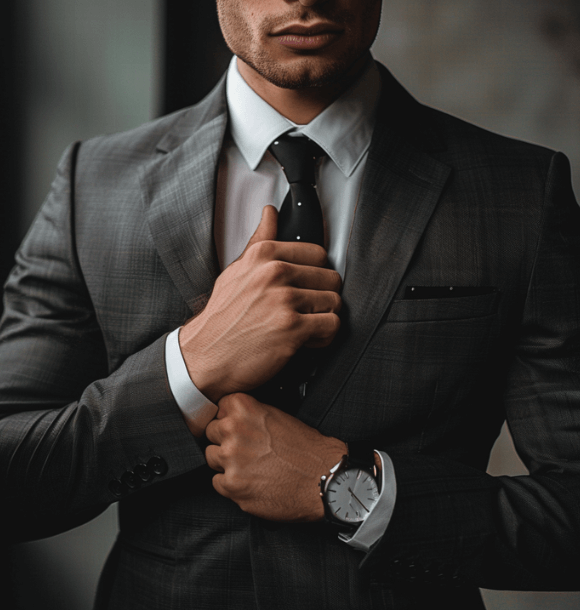
Step into the fascinating world of proper attire as we dive into the role of culture and context. Explore the captivating sub-sections that unravel the influence of cultural norms and the art of occasion-based dressing. Embark on a journey that uncovers the power of clothing to reflect and respect the values and traditions of various cultures, and how dressing appropriately for different occasions can make a lasting impact. Join us as we decode the nuances of attire in this captivating section.
Cultural Norms
Cultural norms play a significant role in determining appropriate attire in different contexts. Understanding and respecting these norms is crucial for dressing appropriately.
| Context | Cultural Norms |
| Business Formal | In many Western countries, business formal attire typically includes a tailored suit, dress shirt, tie, and polished dress shoes. In Japan, traditional attire like the kimono may be expected for formal business occasions. |
| Business Casual | The definition of business casual can vary across cultures. It may involve a collared shirt with slacks or a dress, or a more relaxed approach with no strict guidelines. Researching cultural norms is important for appropriate dress. |
| Smart Casual | Smart casual dressing is ambiguous, and cultural norms determine acceptability. In European countries, it may involve fashionable attire with well-fitted clothing, while in other regions, a more casual approach may be acceptable. |
Understanding cultural norms for dressing is vital in professional and social events. Adhering to these norms shows respect for the local culture and avoids offense.
It’s important to note that cultural norms can evolve and vary within regions and communities. Keeping an open mind, being observant, and adapting to local customs will help ensure appropriate dressing according to cultural norms.
Occasion-Based Dressing
Occasion-Based Dressing is important for dressing appropriately for different events and situations. By considering the specific occasion and its requirements, individuals can ensure that their outfit is suitable and respectful.
1. Formal events: For weddings or galas, dressing in formal attire is crucial. This typically includes a tailored suit or a formal dress. It is important to follow any specified dress codes or guidelines provided by the event organizers to maintain the atmosphere of the event.
2. Casual events: When attending parties or gatherings, dressing in a relaxed manner is acceptable. Depending on the occasion, one might opt for smart casual attire, such as tailored pants or skirts paired with a blouse or button-down shirt. Consider the context and level of formality.
3. Networking events: These events require dressing professionally, as they often involve interactions with potential clients or employers. Business casual attire, such as slacks or a skirt paired with a blazer or collared shirt, is typically appropriate. Create a positive impression while remaining comfortable and approachable.
4. Cultural considerations: Understanding and respecting cultural norms is crucial when dressing for occasions. Different cultures have varying expectations and requirements for attire, so research and follow these guidelines to show respect and avoid unintended offense.
By considering the specific occasion, following dress codes, and respecting cultural norms, individuals can ensure they dress appropriately for different events. Occasion-based dressing allows them to adapt their attire to suit the requirements, creating a positive impression and showing respect for the event and its attendees.
Accessorizing and Personal Style
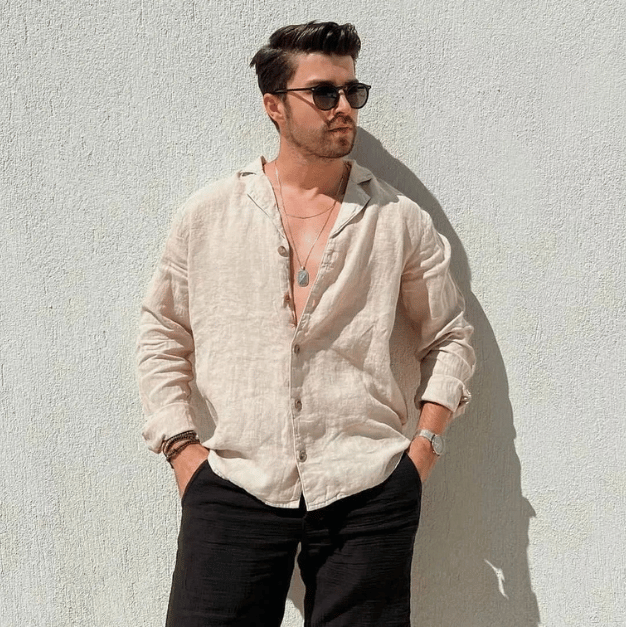
Photo Credits @mensfashioncluub
When it comes to accessorizing and personal style, consider several factors to create a cohesive and stylish look.
- Accessorizing enhances any outfit. Choose statement jewelry, dainty earrings, or a stack of bracelets to elevate your personal style and add flair to your look.
- The right handbag serves as a functional accessory and makes a fashion statement. Choose a tote, crossbody, or clutch that complements your outfit and reflects your personal style.
- Scarves are versatile accessories that can add color, pattern, and texture to any outfit. Style them as headbands, belts, or tie them to a handbag for a stylish touch.
- Hats not only protect from the sun but also add a stylish element to your outfit. Choose a fedora or wide-brimmed sunhat that suits your face shape and personal style.
- Sunglasses are practical for eye protection and add sophistication to your look. Choose a style that flatters your face shape and complements your outfit.
Consider your personal style when accessorizing and choose pieces that reflect your individuality. Experiment with different accessories to find what works best for you. Don’t be afraid to take risks and step out of your comfort zone. Remember, accessorizing is about adding those finishing touches that make your outfit uniquely you.
Dressing for Success: Tips and Tricks
When it comes to dressing for success, it is important to follow these tips and tricks in order to leave a strong impression and radiate confidence in any professional environment.
It is crucial to choose attire that aligns with the organization or event’s dress code. Opt for clothes that fit well, are clean, and free of wrinkles.
Consider wearing neutral colors such as black, navy, or gray, as they are safe choices that convey professionalism. These colors are versatile and can be easily paired with various accessories.
In addition, paying attention to grooming is essential. Make sure your hair is well-groomed and neatly styled. Keep facial hair well-trimmed and maintained, and maintain personal hygiene while also keeping your nails clean and well-manicured. Thoughtful accessorizing can also enhance your outfit, but be cautious not to overdo it. Simple additions like a tasteful watch, a tie or scarf, or minimal jewelry can add a polished touch.
When it comes to footwear, choose closed-toe shoes that are clean and in good condition. Avoid wearing sneakers or overly casual footwear in professional settings. Remember that fit is crucial, so ensure that your clothes fit well and complement your body shape. Ill-fitting clothes can give off a sloppy or unprofessional appearance.
Most importantly, wear your outfit with confidence and a positive attitude. When you feel good in what you’re wearing, it shines through in your demeanor. By incorporating these tips and tricks, you can dress for success and present yourself professionally in any situation.
Frequently Asked Questions
1. How has the Covid-19 pandemic affected work dress codes?
The Covid-19 pandemic has led to a shift in the business dress code, with many companies adopting more casual attire as remote work became the norm.
2. Are employees happier with simplified or dropped dress codes?
Yes, companies that have simplified or dropped their dress codes have found that their employees are happier.
3. How have dress codes been challenged on the basis of gender discrimination?
Dress codes have been challenged on the basis of gender discrimination, with courts upholding the rights of employers to set different appearance standards for men and women.
4. What are some of the new rules and dress norms that have emerged?
Despite the push for more casual attire, new rules have emerged that are similar to the old dress codes, with certain expectations still in place even in more casual work environments.
5. How does dressing appropriately contribute to career success?
Dressing appropriately shows attention to detail, commitment, and consistency, and indicates that you understand and align with the company culture. It can create a favorable impression, increase your chances of being hired or promoted, boost self-confidence, and improve work performance.
6. Should employees transition back into the office with a different dress code?
It is worth considering changing your work clothes as you transition back into the office. The article offers practical steps for those considering changing their work clothes to align with the changing tolerance for discomfort and conformity in work clothes.
